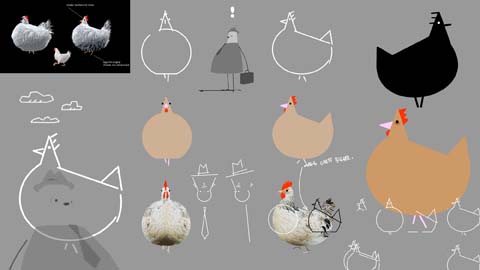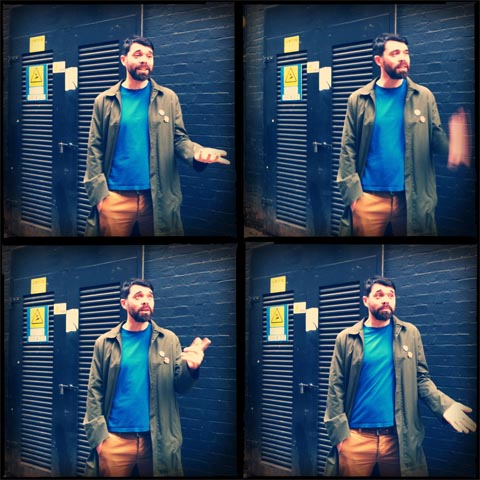
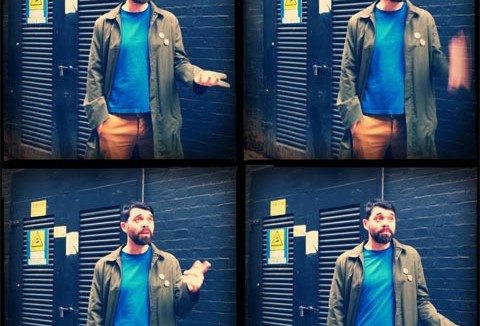
Oscar Focus: Grant Orchard Talks About “A Morning Stroll”
BREWMASTERS NOTE: This week Cartoon Brew takes a closer look at the five Academy Award nominated animated shorts. Each day at 10am EST/7am PST we will post an exclusive interview with the director(s) of one of the films. Today, we discuss Studio AKA’s A Morning Stroll with its writer/director Grant Orchard:

Amid Amidi: At Pixar, when artists pitch their short film ideas to John Lasseter, if Lasseter really likes the idea, he hugs you at the end of the presentation. Did you get any hugs at Studio AKA when you pitched A Morning Stroll, and if so, who hugged you?
Grant Orchard: Not really, some curious questions and then an — ‘OK, we trust you, give it a go’. I bet you think we’re all very Downtown Abbey over here. All arch and stiff, but no, it’s all free hugs and love man. In fact it sounds like Mr. Lasseter is holding back a little, he should share it around a bit more.
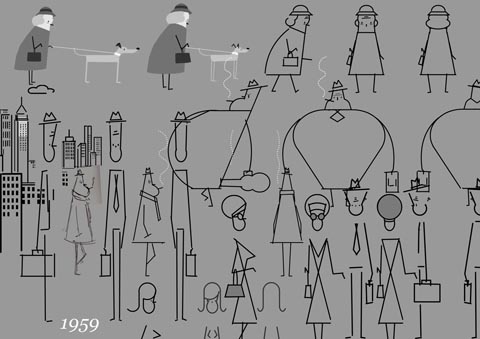
Amid: More seriously, how did you convince Studio AKA, which is the studio that reps you commercially, to make this film?
Grant: I did pitch it as a brief, diverting 3 minute film. Ultimately it doubled in length to a very brief, diverting 7 minute film. So maybe the partners at Studio AKA (Sue Goffe, Philip Hunt, Marc Craste & Pam Dennis) initially thought it might not be that much of a risk; but it was still a risk as we had no outside funding and had to find a way of making it without affecting the commercial work that was coming through the studio. Also they’ve had significant success with their previous shorts, so it would have been easy for them to have rejected the idea, because it’s not the type of film that you can be sure its going to work until it’s pretty much made. Due to its structure I don’t think I could have conveyed it to them any other way than to actually make it. But they’re all filmmakers and have gone through the same commercial demands as me over the years. People won’t trust us (or acknowledge our experience, skills etc.) to develop a project as it progresses – we usually have to deliver absolutes & fully resolved ideas as part of a pitch. So when it comes to self-initiated work, the partners like to show a bit of faith. Which I think is great.
So in a nutshell, we didn’t make the film with an aim to make it profound or thought provoking – rather the point of it was to be a bit playful in our process – and I think everyone was of the same mind; that we make a really fun, interesting film that people would get a kick out of at festivals.
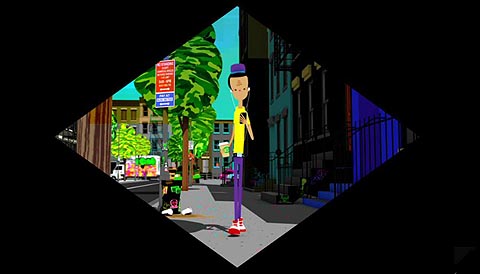
Amid: I read the original story on which your film is based, and it’s less a story than a six-sentence memory capturing a moment in time. When you read that, did you instantly see a film in it, or did the idea evolve over time?
Grant: It definitely evolved over time. Reading that extract just got me thinking of that scenario in lots of different ways. It felt like an urban myth, and urban myths always get exaggerated and pulled in different directions with each re-telling. Originally I was going to animate three different versions of the story alongside each other. All would have the same shot compositions and length, but would vary in quite subtle ways. Then I guess I had the idea of setting each section 50 years on from each other, and that’s when the chronological three-act structure took shape.
Amid: Reduction seems to be a big theme throughout your work. In your series of “Love Sports” shorts, you represented people as rectangles, and sports are shown in their most abstract form possible. In A Morning Stroll, there’s a very formal structure to the shots and framing at the beginning of each sequence. Do you feel the simplification and self-imposed limitations make your films stronger or is it something you simply get a kick out of doing?
Grant: I just like doing it. I find imposing a set of rules on each project protects you from either repeating yourself, or drowning in a sea of endless possibilities. Which sounds very limiting, but is actually very liberating.
For example with the “Love Sport” series the only rule was that all the characters had to be rectangles with no features. As soon as that decision was made the job almost designed itself. With A Morning Stroll it was the rule that each chapter had to be structurally the same and had to be exactly fifty years apart from one another.
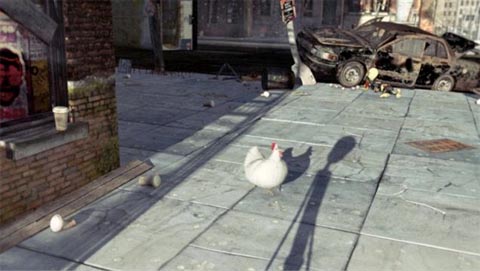
Amid: In your short, the people in 1959 seem to be much more aware of their surroundings and considerate of each other, compared to the people in 2009. Your projections into the future are even more bleak. Are you a pessimist about where humanity is headed?
Grant: No, not at all! I think that comes back to the setting down rules. As soon as I decided that each chapter would be set in different time periods, with the same shots, the obvious thing to do was explore the differences between each of them; the most obvious being how the man reacts to seeing a chicken walk down a city street. In 1959 he watches it. In 2009 he records it. It’s not exactly a critique of how we live, just an observation.
Also the fact that there’s a clumsy use of technology is not a pre-curser to the final chapter. That was all about the chicken. It soon became apparent that the chicken and its daily routine was the only constant in an ever changing city. So it made me laugh to think of it as The Ultimate Survivor. So for the last section I wanted to put it in the most challenging (and ridiculous) environment possible. That was my vision of the future for the characters in this film, not my personal vision, which is much more utopian and frankly sick-making.
Amid: The music and sound design in the film is super inventive and adds a whole new layer of emotion and entertainment. I notice that you’ve worked with the same sound person, Nic Gill, on many of your projects. Describe the nature of the collaboration and how he came up with the music and sound for this film?
Grant: Up to quite recently we worked in the same room together at the studio, so I always had the great fortune of getting his input right from the start of a project. He’s an editor at Studio AKA, but use to be a DJ and works on some really lo-fi equipment to get his sounds. He had to mix the whole film at the studio and got it spot on. We sent it to be professionally mixed and they sent it back saying they didn’t need to because it was spot on.
I’m always amazed at what he comes up with. Originally I wanted to use Aphex Twin’s “Come to Daddy” for the final scene. It’s a really hard, aggressive track; but Nic just went off and came back with this Brazilian carnival track- which was genius and much funnier.
Amid: There’s a phone app featured in your film that looks like a lot of fun. Have you ever considered making that into a real game because I would be the first in line to buy it.
Grant: It’s currently in development discussion with a games company, which is incredible, because when I came up with it I just thought what would be the most distracting and silliest app you could get. Which is maybe the secret, who knows.

